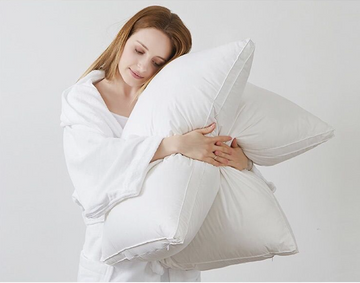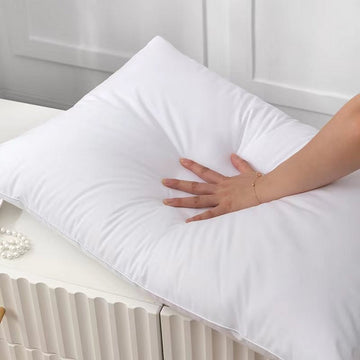Understanding the Sleep Environment: The Importance of Temperature Regulation
How Hot Sleepers Affect Sleep Quality
For hot sleepers, finding the right sleep temperature is a big deal. Your body's core temperature naturally drops as you sleep, and that helps you drift off. But if you're a hot sleeper, you might feel too warm under typical blankets. This can lead to tossing, turning, and waking up sweaty. In fact, poor temperature regulation can mess with sleep quality. It can make it hard to fall asleep or stay asleep. This lack of rest can affect your mood, focus, and overall health. That's why a blanket that keeps you cool is so important for hot sleepers. It's not just about comfort; it is key for getting that good night's sleep your body needs.

The Role of Blankets in Maintaining Body Temperature
Blankets are key in our sleep environment. They keep a steady temperature all night. For hot sleepers, this is vital. A blanket must not trap too much heat. It should help get rid of extra body warmth. This way, you stay cool and sleep well. Looser weaves let air move, keeping you comfy. Tight weaves may hold heat in. So, choose the right type for cool sleep. Your blanket affects sleep. Make sure it suits your warmth needs.
Material and Weave Selection for the Ideal Hot Blanket
Identifying Materials That Promote Heat Dispersion
When selecting a blanket for a hot sleeper, certain materials are key. These include:
- Cotton: This natural fiber is breathable and wicks away moisture.
- Linen: Known for its cool feel, linen is an excellent choice for heat regulation.
- Bamboo: With its ability to wick moisture, bamboo keeps you dry and comfortable.
- Tencel: This eco-friendly fabric is soft, breathable, and manages moisture well.
Choosing materials that encourage heat dispersion is essential to prevent overheating during sleep.
Weaving Techniques: The Impact on Air Flow and Comfort
The weaving pattern of a blanket can dictate how well it breathes. Let's delve into weaving styles best suited for hot sleepers. Breathable weaves like waffle, knit, or percale offer ample airflow, preventing heat build-up. They also provide a level of coziness without trapping in warmth. A loose weave equates to better ventilation, allowing body heat to escape throughout the night. For the ultimate in comfort and temperature regulation, opt for blankets with these weaving techniques to ensure a cooler sleep.
The Ultimate Checklist: Ensuring Your Hot Blanket Meets Specific Needs
Analyzing Personal Sleep Habits and Preferences
- Consider your usual sleep time and waking habits.
- Note whether you often feel too hot or just slightly warm at night.
- Think about how your sleepwear might affect your temperature comfort.
- Reflect on whether you move a lot or stay still while sleeping.
- Remember any preferred blanket weight or texture.
- Decide if you need a blanket that's easy to clean regularly.
- Jot down any allergies or sensitivities to certain fabrics.
- Assess if you share the bed and the sleeping preferences of your partner.
Seasonal Considerations: Adapting Your Blanket for Year-Round Use
Hot sleepers need a versatile blanket for different times of the year. Here's a checklist to help:
- Spring/Summer: Choose lightweight and breathable fabrics. Think cotton or linen.
- Fall/Winter: Opt for blankets that provide warmth without overheating. Layer with a breathable cover.
- All Seasons: Look for moisture-wicking materials and blankets with temperature-regulating tech.
Adapting your blanket to the season ensures comfort all year.






